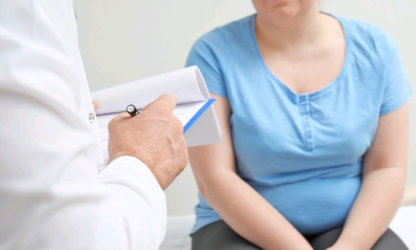Contributed by Dr. Ajay Mehta, Director & Consultant Surgical Oncology, HCG Cancer Centre Nagpur
 A Women’s body undergoes numerous changes during her lifetime. Menopause is one such phase which is a natural biological process marking the end of a woman’s menstrual cycle. The process starts in the mid-40s and 50s in most women characterised by symptoms such as vaginal dryness, hot flashes, changing levels of oestrogen and progesterone and no menstrual period for about 12 months. It brings with it more than just hormonal and physical changes. In some cases, it may also raise concerns about cancer risks. It is important to realize that certain menopausal symptoms might mirror those of gynaecological cancers including uterine cancers, which are tumours that begin in the female reproductive organs.
A Women’s body undergoes numerous changes during her lifetime. Menopause is one such phase which is a natural biological process marking the end of a woman’s menstrual cycle. The process starts in the mid-40s and 50s in most women characterised by symptoms such as vaginal dryness, hot flashes, changing levels of oestrogen and progesterone and no menstrual period for about 12 months. It brings with it more than just hormonal and physical changes. In some cases, it may also raise concerns about cancer risks. It is important to realize that certain menopausal symptoms might mirror those of gynaecological cancers including uterine cancers, which are tumours that begin in the female reproductive organs.
Uterine cancer is the most common type of cancer that occurs in the reproductive system of a woman’s body when the healthy cells in the uterus begin to change and grow uncontrolled, forming into a mass or tumour. Uterine cancer is different from cervical cancer (cancer confined to uterine cervix) and is broadly of two types – Endometrial Cancer occurring in the endometrium or the uterine lining and Uterine sarcoma in the myometrium or the muscle wall of the uterus.
Symptoms of uterine cancers are as follows:
- Vaginal bleeding in between menstrual cycles before menopause
- Vaginal bleeding or spotting post-menopause
- Lower abdominal pain or cramping in pelvis
- Thin white or clear vaginal discharge post-menopause
- Extremely heavy and frequent vaginal bleeding if you’re older than 40
Causes
Uterine cancer may develop due to a number of reasons. The risk factors include:
- Age: As you become older, your chances of getting uterine cancer rise. The majority of uterine malignancies develop after the age of 50.
- Obesity: Some hormones are converted to oestrogen by fat tissue, increasing the risk of uterine cancer. The Higher the amount of fat tissue, the greater the effect on oestrogen levels.
- Ovarian diseases: Certain ovarian cancers cause high oestrogen levels and low progesterone levels. These hormonal changes can increase the risk of uterine cancer.
- Early menstruation: If you started having your period before the age of 12, your chances of developing uterine cancer are higher. This is because your uterus is exposed to oestrogen for a longer period of time.
- Late menopause: Similarly, if menopause occurs after the age of 50, your body is exposed to oestrogen for a longer period of time which increases the risk of cancer.
Postmenopausal women are more likely to develop uterine and ovarian cancers. Abnormal uterine bleeding is the most prevalent sign of uterine cancer, which occurs in 75 percent to 90 percent of women with this type of cancer. It might be difficult to tell the difference between irregular bleeding and a typical menstrual period, especially during the menopausal transition.
Your risk of acquiring cancer rises with age. As a result of their age, women going through menopause have a higher risk of acquiring cancer. For women undergoing menopause beyond the age of 55 years old, the chances of uterine cancer are higher due to increased oestrogen exposure owing to longer menstrual period cycles.
Some safe and healthy ways to manage menopause symptoms include:
- Exercising regularly
- Reducing stress
- Getting enough sleep
- Avoiding hot flash triggers like coffee, tea alcohol
- Quitting smoking
The chances of cancer risk before and after menopause can be considerably reduced by leading a healthy lifestyle, with small yet significant changes. Nevertheless, it is always advisable to consult a healthcare expert in case any of the symptoms or changes are health are noticed in overall health.
 Newspatrolling.com News cum Content Syndication Portal Online
Newspatrolling.com News cum Content Syndication Portal Online





